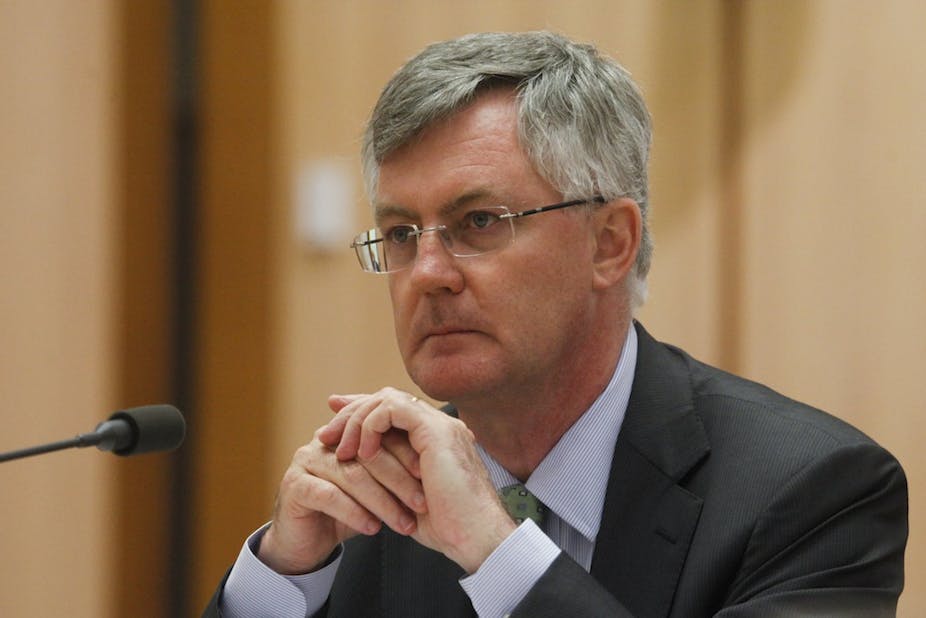Two reports released on the same day have confirmed what we already knew - that the structural budget balance is in poor shape.
The Parliamentary Budget Office (PBO) has launched its report, Estimates of the structural budget balance of the Australian Government 2001-02 to 2016-17 at the same time as Treasury has brought out its Working Paper Estimating the structural budget balance of the Australian Government.
The message is not new - recent reports by the Grattan Institute and consultants Macroeconomics came up with similar conclusions.
It is generally accepted that the actual government budget will (and should) fluctuate between deficit and surplus during, respectively, downswings and upswings in the economy.
During the Howard/Costello years, the budget was largely in surplus. The record economic growth during their period in government led to huge windfalls in receipts from company income tax. Falls in unemployment, jobs growth and wages growth greatly increased personal income tax receipts.
The Rudd/Gillard/Swan era was characterised by massive spending (which some regarded as reckless) in an attempt to head off the impacts of the global financial crisis followed by a whole raft of spending unfunded by unexpected (or not forecast) rises in tax revenue.
This resulted in high budget deficits which the government has regularly promised to reduce, or more optimistically turn into a surplus.
As opposed to the actual budget balance, the structural balance is basically the budget deficit or surplus after accounting for cyclical movements in the economy - the balance when conditions are normal or average.
By taking out cyclical fluctuations the trends in revenue and expenditure can be used to calculate the structural balance. To quote the Treasury, the structural balance provides “insights into the sustainability of current policy settings”.
On this measure it would be true to say that current policy settings are indeed unsustainable and the next government has quite a job on its hands.
The PBO reports that the structural deficit goes back to the final years of the Howard/Costello government when the actual budget was in surplus and the government was not only retiring debt but was a net lender.
Instead of accumulating greater surpluses as investment against the eventual downturn, it gave away a huge amount particularly in generous middle class welfare and significantly eroded the tax base with cuts to income tax rates and thresholds. While it looked like government finances were in good shape, the structural balance estimates present a different picture.
The Rudd/Gillard/Swan governments carried out the tax cuts proposed by Howard, continuing the erosion of the tax base. Apart from the cyclical response to the GFC, the Swan/Gillard government would have us believe that they have been the model of fiscal rectitude with billions of dollars of “saves” and investment in the future such as the Gonski education reforms and DisabilityCare.
However, these are expensive items, and with revenue estimates difficult to believe, look likely to widen the structural deficit. Treasury secretary Martin Parkinson spelt it outin an address this week to business economists - Australians need to either have fewer government services or increased taxes.
This appears to be dawning on politicians as opposition leader Tony Abbott puts tax reform back on the table. Even the dreaded subject of GST broadening and a rate increase - off limits for both sides of politics but almost universally supported by economists - is back on the agenda. There is also a need to reduce households expectations on what government can provide.
Apparently the PBO report was peer-reviewed by four (unnamed) reviewers. What a change from what we’ve come to expect from governments intent on surprising us with big ticket items with little thought or discussion.
Baby Bonuses, the National Broadband Network and the Mineral Resource Rent Tax are just some that spring to mind. And what ever happened to “root and branch” tax reform?
What ever happened to reasoned policy formulation based on Green Papers, public discussion and White Papers giving plenty of time for sensible debate on policy issues?
Given the growing disquiet about the role of the Treasury in framing the budget and particularly its forecasting failure, the PBO might provide a possible template for economic debate in the future.
It claims its role is to present independent and non-partisan analyses of the budget. There is a growing loss of faith, particularly among business, in Treasury’s competence and its allegiances.
Something needs to be done to counter the suspicions and accusations (vigorously denied by Parkinson) that the Treasury has become politicised and the PBO offers a possible means to increase transparency.

